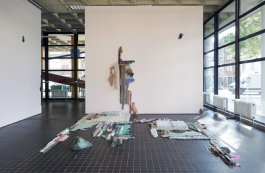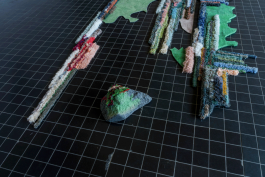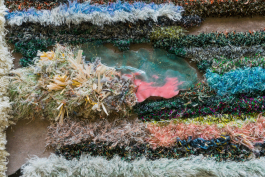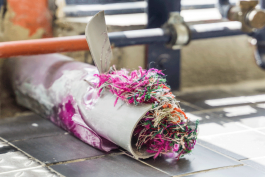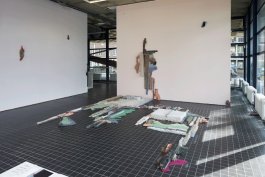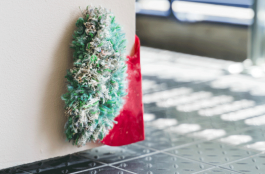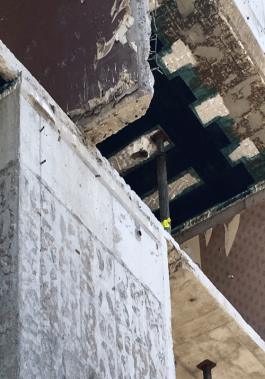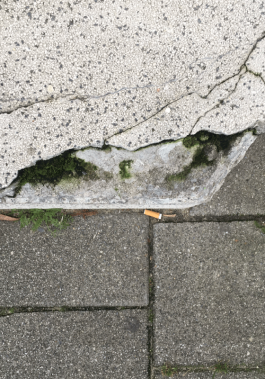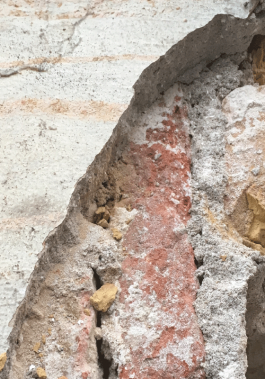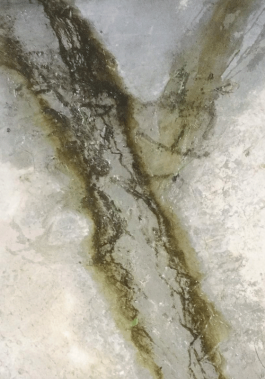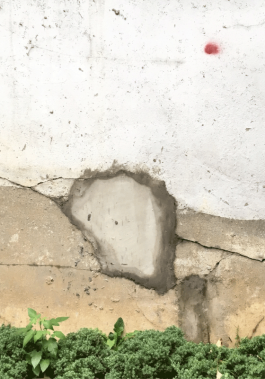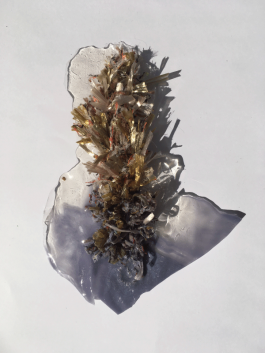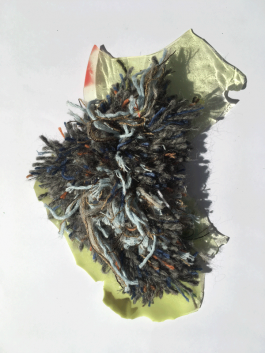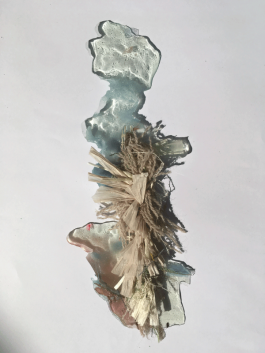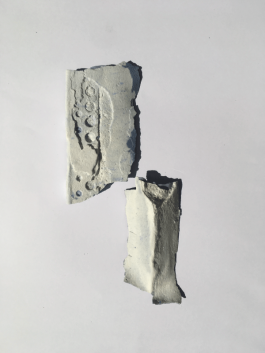Follies, And Yet We Still Go On
Dimension: 700cm x 400cm x 15cm
Material: cotton, wool, plastic, resin, viscose flock
Technique: tufting, flock printing, resin casting
Exhibition in Billitown, Den Haag, part of the KABK Exposed show.
'Follie-And Yet We Still Go on' is a textile representation of the follies, and ruins around our daily lives. Imitating the form of a rug, the work questions the functionality and ethics of commercial interior textiles.
Traditionally, Follies are fake ruins in the European landscape gardens, especially in the 18c.
Often they have a shape of Roman temples, Medieval towers, historic abbeys. Folly is a shy storyteller. It is a shallow mimic of real ruins, and the function is no more than decorative. However the follies also reminds us of imperfection and mortality of human being by its deformed shapes.
I wanted to redefine Follies, by finding the ruins from my daily life.
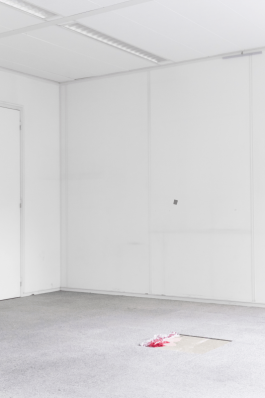
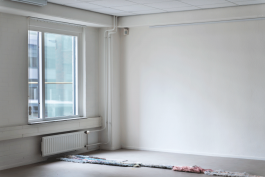
The small ruins such as cracks on the pedestrian blocks, tiny hole on the building surface, molds on the ceiling, scratch on the door, are more of a ‘domestic’ ruins because it does not convince people in its value to be preserved.
The continuous build-up, imprint, accumulation of experiences and personal history that is evident as a living creature, they all are happening in a ‘domestic scale’ in our lives, often neglected.
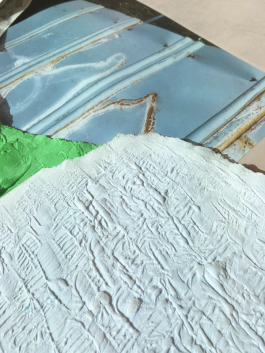
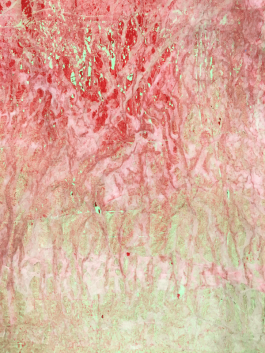
Translating domestic ruins in the language of textiles, especially in the form of ‘interior textile’, is ironic in many ways.
Mostly because the physical characteristic of domestic ruins is avoided in commercial interior design territories. I felt strong guilt that I was even fascinated by those dirty parts of the city life, as that I knew that I would never want the ‘original domestic ruins’ to become part of my house.
The recent interior design trend with the exposed bare concrete wall or using abandoned buildings with minimal restoration can be the extension of this guiltless use of domestic ruins, because of its transformation from ‘life’ to ‘style’.
That is why I name my work as ‘Follies’, the shallow mimic of the real ruins.
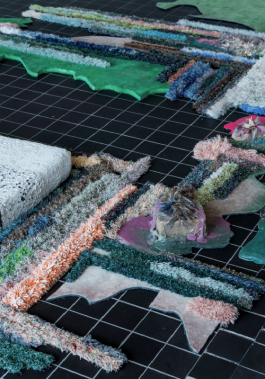
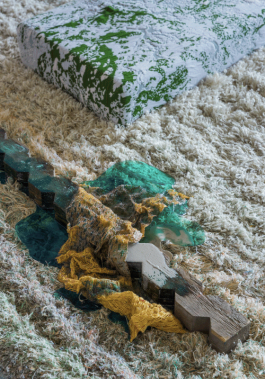
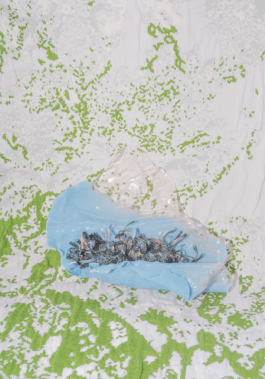
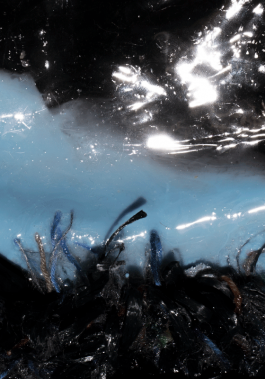
I made my own ‘Follies’- fake, mimic of real ruins to revoke romanticism in the 18c European landscape gardens- to celebrate the atonal harmony of domestic ruins. Folly is a storyteller. It is a shallow mimic of real ruins, and the function is no more than decorative. However, it also reminds us of the imperfection and mortality of human beings. We accept our incompleteness, and we go on. I consider my work as a modernized folly that you can put in your house.
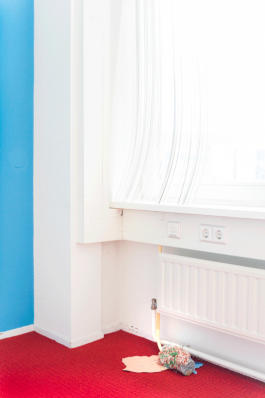
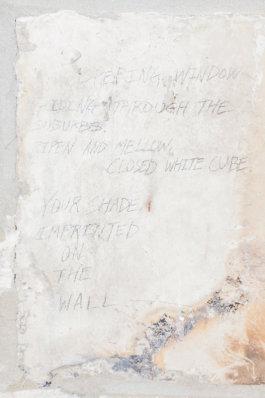
I mixed various techniques- tufting, flock printing, knitting, and resin casting- to exaggerate contrasting materiality and a subtle clash of colors that I encounter in domestic ruins.
The primary technique that I used was tufting, like carpet making. I was looking for a solution that people can easily step on with their shoes on, or walk around it. By combining various yarns (cotton, silk, wool, plastic, etc) with different origins and characteristics, I could achieve the complex color and texture that was essential for the base of this work.
Then I started to collect trashes around the construction sites or the wastes from house renovations. I tried to combine the tufted yarns and those industrial objects by casting epoxy, mimicking the structure of the domestic ruins of the city. Softness and hardness, roughness and tenderness, delicateness and aggressiveness, and more.
Some yarns are from the bankrupt tapestry factory in Jinju, South Korea that my mother kept for years. But also I bought brand-new yarns and materials specifically for this project. Altogether it forms a fake ruin, a rug, that is broken, showing lots of holes, with chaotic outlines.
